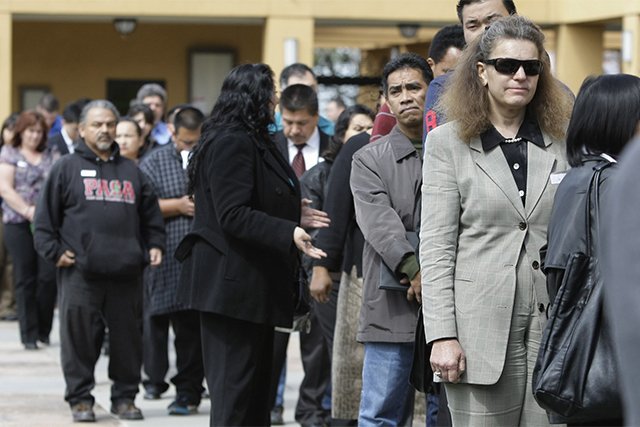The old adage “numbers never lie” is true. Numbers can’t lie, but the people who use them can and very often do. Such is the case with the unemployment rate in Rhode Island.
When a falling unemployment rate in Rhode Island was coupled with a sudden loss of 2,600 jobs from September to October, Charles J. Fogarty, the director of the state’s Department of Labor and Training, talked-up the unemployment drop and dismissed serious concerns about the job losses. “[The number of lost jobs] got our attention but everything else seems to be working well,” Fogarty insisted. “So, it could be a statistical aberration.”
The DLT and others in the state who stand to benefit from improving employment figures see recent improvements in Rhode Island and across the nation as a sign of significant economic gains. Between June and November 2014, the Rhode Island unemployment rate dropped from 7.9 percent to 7.1 percent, according to the Bureau of Labor Statistics. Similarly, the U.S. unemployment rate also dropped — down to 5.6 percent — causing many political pundits to tout the alleged success of President Barack Obama’s economic policies.
What pundits both inside and outside of Rhode Island won’t tell you is that the real reason the unemployment rate is falling is not because the economy is improving; it’s because unemployment data are being tortured to fit a politically driven narrative. In other words, politicians and their sycophants are lying to you.
Although it’s true the percentage of people working relative to the number of workers considered by the BLS to be in the labor force is improving in Rhode Island and the United States as a whole, the number of workers in the labor force is shrinking to an unprecedented level.
In March 2010, at the height of the recession, the Rhode Island unemployment rate stood at a dismal 11.9 percent and the labor force included 573,930 workers. Even though the unemployment rate is down to 7.1 percent (with lower figures expected for the December report), the labor force has shrunk by more than 20,000, making it appear as though the economy has improved more than it actually has.
If the same number of workers were in the Rhode Island labor force today as there were in March 2010, the unemployment rate would actually be over 10 percent — a much less appealing figure for the Rhode Island Democrats who have run the state over that period.
Nationally, the situation is only slightly better. There are more than 92 million American workers aged 16 or older that are not considered to be in the labor force, which means only 62.7 percent of the population eligible is working or looking for work. This represents the lowest national labor force participation rate since 1978.
It doesn’t come as much of a surprise, then, that unemployment rates are falling; there simply aren’t as many workers in the economy as there were just four short years ago, and there is no sign the drain of available workers will halt anytime soon.
[Originally published at the Providence Journal]




